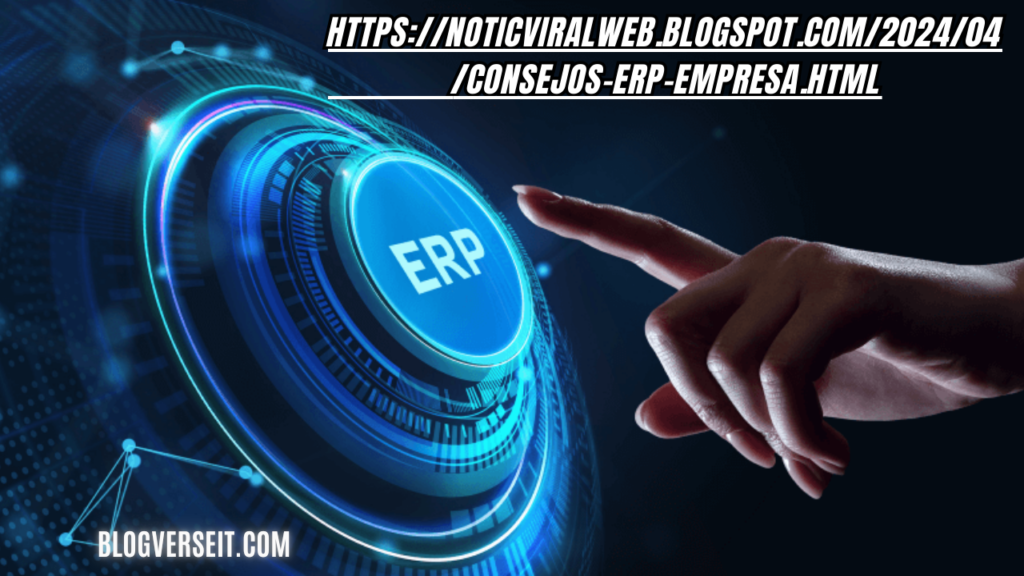Introduction
Why Your Company Needs ERP
ERP systems have the power to transform businesses. They integrate all essential functions, such as inventory management, accounting, human resources, and supply chain processes, into one unified platform. Companies that deploy ERP solutions benefit from increased efficiency, better decision-making, improved collaboration, and cost reduction. But, for many, the initial question remains: why should a business invest in ERP?
Well, modern businesses are becoming more complex. Managing everything manually or through disconnected systems creates inefficiencies and blind spots in decision-making. ERP fills these gaps, offering visibility, real-time data, and enhanced collaboration. The scalability of ERP systems also ensures that as your business grows, your operations won’t suffer from disjointed processes.
In short, companies that need faster processes, better data accuracy, and a higher level of control should consider ERP implementation.
The Fundamentals of ERP Implementation
Implementing an ERP solution involves more than just software installation. It requires a strategic approach encompassing planning, execution, testing, and optimization. Without a well-crafted plan, companies often face challenges like budget overruns, delays, and system inefficiencies.https://noticviralweb.blogspot.com/2024/04/consejos-erp-empresa.html .
So, where does one begin? With these fundamental steps:
Understanding the Business Needs:
Before diving into the world of ERP, your company must first identify specific needs and challenges. Pinpoint the areas where inefficiencies exist and list the primary goals you want the ERP system to achieve.
Choosing the Right ERP Solution:
Not all ERP solutions fit every business. Evaluate your options carefully, considering factors like scalability, integration capabilities, cost, and user-friendliness. Popular ERP platforms include SAP, Oracle, and Microsoft Dynamics, each offering unique features.
Forming an ERP Implementation Team:
Success hinges on collaboration. Form a dedicated team that includes representatives from key departments—IT, finance, operations, and human resources. An internal champion from top management should also steer the project.
Setting Realistic Budgets and Timelines:
Budget overruns are common in ERP implementation projects, but they’re avoidable with careful planning. Set realistic timelines and account for unforeseen costs to ensure smoother implementation.
Best Practices for Successful ERP Deployment
When your company embarks on the ERP implementation journey, applying industry best practices will help ensure everything goes smoothly. Follow these crucial steps to avoid common mistakes and optimize the process.https://noticviralweb.blogspot.com/2024/04/consejos-erp-empresa.html.
1. Conduct a Thorough Needs Assessment
Before starting, spend time on a detailed needs assessment. Identify key pain points and objectives that the ERP system will address. By understanding your business requirements thoroughly, you can select a system tailored to your organization.
2. Involve Stakeholders Early On
Stakeholder involvement is essential for ERP implementation. Engage key personnel from different departments early in the process, ensuring that their input is considered. Involvement leads to higher buy-in and ensures that the ERP solution aligns with organizational goals.
3. Choose the Right Vendor
Selecting the right ERP vendor plays a significant role in your project’s success. Evaluate vendors based on their industry experience, support services, and customer feedback. You need a vendor that understands your business and offers post-implementation support.
4. Ensure Data Accuracy
During the implementation phase, migrating data from legacy systems to the ERP platform can lead to complications. Ensure that all data is clean, organized, and accurate to avoid costly errors.
5. Focus on Training and Change Management
ERP systems often come with steep learning curves, which can lead to resistance from employees. Invest in comprehensive training programs and change management strategies to ease the transition and maximize user adoption.
Common Challenges and How to Overcome Them
No ERP implementation goes without challenges, but forewarned is forearmed. Here’s how to tackle some common roadblocks.
Resistance to Change
Employee resistance is perhaps the biggest hurdle in ERP implementation. Introducing a new system can disrupt established workflows, leading to pushback from employees who prefer familiar routines. To mitigate this, develop an open line of communication with employees, explaining the benefits of the new system. Offer robust training programs to boost confidence.
Underestimating the Scope
ERP systems often encompass multiple departments and processes, making it easy to underestimate the project’s scope. This can lead to budget overruns and missed deadlines. Prevent this by setting realistic goals and timelines from the outset. Break down the implementation into smaller phases to reduce complexity.
Data Migration Issues
Data migration is one of the most challenging aspects of ERP implementation. Legacy systems often store data in incompatible formats, leading to issues during the transfer. Assign a dedicated team to oversee data migration and ensure that all information is correctly mapped, cleansed, and transferred.
Leveraging ERP for Growth and Scalability
A successful ERP implementation doesn’t stop with the initial deployment. To truly unlock the system’s full potential, businesses must continually optimize their ERP system and leverage its features for growth and scalability.
Regular System Updates
ERP systems constantly evolve, offering new features and improvements. Keep your system up-to-date by installing patches and updates regularly. These updates not only enhance security but also ensure that your system operates efficiently.
Customization and Integration
ERP platforms are highly customizable. Over time, you can tailor the system to meet your business’s growing needs. Ensure that you take full advantage of customization features and integrate new modules or third-party applications as needed.
Monitoring KPIs and Performance Metrics
To measure the success of your ERP system, track key performance indicators (KPIs) and metrics related to productivity, cost savings, and process improvements. Use these insights to make informed decisions and optimize workflows.
ERP and Future Technologies
As businesses advance into a technology-driven future, ERP systems are evolving too. Today’s ERP platforms are increasingly integrating artificial intelligence (AI), machine learning, and Internet of Things (IoT) capabilities to offer predictive analytics, automation, and real-time insights.https://noticviralweb.blogspot.com/2024/04/consejos-erp-empresa.html.
Artificial Intelligence and Automation
Modern ERP systems leverage AI to automate routine tasks, such as inventory management and financial reporting. This automation reduces human error and improves efficiency. AI also powers predictive analytics, allowing companies to anticipate trends and make data-driven decisions.
IoT Integration
The integration of IoT into ERP systems enhances supply chain management by providing real-time monitoring of assets, inventory levels, and production processes. This real-time data helps businesses respond more quickly to changes in demand or production capacity.
Cloud-Based ERP Solutions
Cloud ERP is gaining popularity due to its scalability, flexibility, and cost-efficiency. Cloud-based ERP systems eliminate the need for on-premise infrastructure, reduce maintenance costs, and allow employees to access the system from any location. For growing businesses, cloud ERP offers a seamless way to scale operations without the need for costly upgrades.
Key Takeaways for ERP Implementation Success
Preparation is Key:
Conduct a thorough needs assessment and plan ahead to ensure your ERP system addresses all business challenges.
Collaboration is Crucial:
Involve stakeholders, choose the right vendor, and create a cross-functional team to ensure a smooth process.
Data Accuracy Matters:
Clean, accurate data is essential for a successful migration.https://noticviralweb.blogspot.com/2024/04/consejos-erp-empresa.html.
Training and Change Management:
Invest in employee training and change management strategies to ease the transition and ensure widespread adoption.
Continuous Optimization:
Post-implementation, regularly update and optimize the ERP system to keep it aligned with your business goals.
ERP implementation can feel overwhelming, but by following these guidelines, businesses can streamline operations, improve productivity, and set themselves up for long-term success.
Conclusion
ERP implementation may come with challenges, but with the right approach, it transforms your business operations, making them more efficient and scalable. A careful strategy, involvement from all departments, and thorough planning ensure a smooth ERP journey that delivers long-term benefits for your company .https://noticviralweb.blogspot.com/2024/04/consejos-erp-empresa.html .
Also Read: MangaRead: The Ultimate Online Manga Destination
FAQs
What is ERP, and why does my company need it?
ERP stands for Enterprise Resource Planning, a software system that centralizes business processes into one unified platform. It helps companies increase efficiency, reduce costs, and improve decision-making.
How long does it take to implement an ERP system?
ERP implementation timelines vary, but most projects take anywhere from six months to two years, depending on the size and complexity of the organization.
What are the common pitfalls in ERP implementation?
Common pitfalls include resistance to change, underestimating the project’s scope, and data migration issues. Proper planning, stakeholder involvement, and clean data migration can help avoid these problems.
Can ERP systems be customized?
Yes, ERP systems offer extensive customization options. Businesses can tailor the system to meet specific needs by adding modules or integrating third-party applications.
What is the cost of ERP implementation?
Costs vary widely based on the size of the business, the ERP system chosen, and the level of customization. However, companies should plan for both upfront and ongoing costs such as licensing, training, and support.
What role does training play in ERP implementation?
Training is crucial for ERP success. It helps employees learn how to use the new system effectively and reduces resistance to change, increasing overall system adoption.







